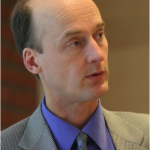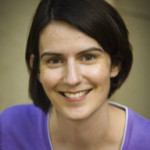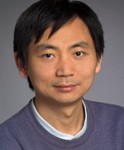The European turbulence conference gathers every two years the community of scientists involved in the study of turbulence, from fundamental physics issues to applied fluid mechanics – usually over 450 participants. Eight outstanding contributors are the central invited speakers, and 5 sessions are run in parallel.
The first ETC meeting took place in 1986 at the Ecole Centrale, in Lyon. For the 14th edition and 25th anniversary of this very successful event, the Euromech Committee has again selected Lyon.
Host: ENS de Lyon
Scientific Committee: Detlef Lohse [ETC Chair] (U. Twente), Eberhard Bodenschatz (MPI Göttingen), Carlo Casciola (La Sapienza, Roma), Stephan Fauve (ENS de Paris), Yury Kachanov (Novosibirsk), Dan Henningson (KTH Stockholm), Rich Kerswell (U. Bristol), Szymon P. Malinowski (U. Warsaw), Jean-François Pinton (CNRS - ENS de Lyon), Neil Sandham (U. Southampton).
Local Organization Committee: Jean-François Pinton (CNRS - ENS de Lyon), Mickael Bourgoin (CNRS - Université de Grenoble), Laurent Chevillard (ENS de Lyon), Fabien Godeferd (CNRS - EC Lyon), Nicolas Mordant (Université de Grenoble), Aurore Naso (CNRS - EC Lyon), Alain Pumir (CNRS - ENS de Lyon), Romain Volk (ENS de Lyon).Important dates to come:
Opening of abstract submissions: October 2012 Deadline for abstract submissions: January 8th, 2013 Notification of acceptance: March 1st, 2013 Opening of registrations: March 15th, 2013 Deadline for early registration: May 31st, 2013
Axel Brandenburg
(Nordita, Sweden) Nordita AlbaNova University Center Roslagstullsbacken 23 SE – 106 91 Stockholm Sweden website: http://www.nordita.org/~brandenb/Biography. Axel Brandenburg is professor at Stockholm University and Nordita, where he is also currently the deputy director. He received his PhD at the University of Helsinki in 1990. After two postdocs at Nordita in Copenhagen and at the High Altitude Observatory at the National Center for Atmospheric Research in Boulder/Colorado he returned to Nordita as Assistant Professor and went in 1996 as full Professor of Applied Mathematics to the University of Newcastle upon Tyne. In 2000 he moved once again to Nordita, this time as full professor. He became professor at the Department of Astronomy in Stockholm when Nordita moved from Denmark to Sweden in 2007. He is currently holding an ERC Advanced Grant. Axel Brandenburg is working in the field of astrophysical fluid dynamics and has also an interest in selected topics of astrobiology. He is particularly interested in the question of magnetic field generation from turbulent motions with applications to the Sun and stars, accretion discs, galaxies, and the early Universe. He is also responsible for the maintenance of the Pencil Code, which is a public domain code (pencil-code.googlecode.com) for astrophysical fluid dynamics that is well suited for large clusters with distributed memory.
Numerical simulations of turbulent dynamos. Many astrophysical bodies (for example the Sun or the Milky Way) consist of hot ionized gas which is electrically conducting. Such flows are also turbulent. However, a purely hydrodynamic turbulent state can become unstable to the dynamo instability, so the final state becomes magnetized. Significant amounts of energy can then be converted to and dissipated through magnetic fields. Numerical simulations show a turbulent forward cascade in which the magnetic spectral energy is always slightly larger than the kinetic spectral energy. The ratio of kinetic to magnetic energy dissipation scales with the magnetic Prandtl number approximately to the 1/2 power, so at low magnetic Prandtl numbers, most of the energy is dissipated magnetically. This leaves much less energy in the rest of the kinetic energy cascade than at unit magnetic Prandtl numbers. Consequently, at given numerical resolution the viscosity can be lower than otherwise. Simulations show that for isotropically forced turbulence, the so-called small-scale dynamo exists at magnetic Prandtl numbers down to 0.01.
Next, I will discuss two quite different examples in which turbulent hydromagnetic flows can develop spatio-temporal structures on scales much larger and longer than those of the turbulence. The first example is what is sometimes referred to as a mean-field or large-scale dynamo, which requires finite helicity of the flow. Since magnetic helicity is conserved in the limit of high electric conductivity, it is driven preferentially to larger scales. This process can be modeled quantitatively in terms of averaged equations in which the magnetic diffusivity is renormalized and other new terms (e.g. the alpha effect) appear.
The second example is about a process that is now sometimes referred to as negative effective magnetic pressure instability. In this case the magnetic pressure gets renormalized and can become negative. This process is general and exists even in isotropic non-helical turbulence. However, when it is applied to a strongly stratified gas with an applied uniform magnetic field, an instability develops that leads to magnetic flux
concentrations on scales encompassing that of at least ten turbulent eddies. The physics behind this is straightforward: as the magnetic field is increased, it increases the magnetic pressure, but it also suppresses the turbulent pressure, and this effect can be stronger, rendering the total magnetic effect a negative one.
These two examples illustrate the general principle by which the consideration of averaged equations can lead to new insights with quantitative predictions that are then also borne out by direct numerical simulations. Other dramatic examples include the turbulent pumping of passive scalars and angular momentum transport even for rigid rotation. Applications to the Sun will be discussed.

Roberto Camussi
(Roma Tre University, Italy)Dipartimento Ingegneria Meccanica e Industriale
Via della Vasca Navale 79, 00146 Roma, Italy. website: http://host.uniroma3.it/docenti/camussi/
Biography. Roberto Camussi is a professor of Fluid Dynamics at the University Roma Tre of Rome. He received his PhD in Theoretical and Applied Mechanics from the University “La Sapienza” of Rome in 1995. In the same year he became a researcher at the University Roma Tre where now he is full professor. He teaches courses on fluid dynamics, aerodynamics and propulsion as well as advanced courses on aeroacoustics for the Doctoral School of Engineering in Roma Tre. The leading themes of his present research activity are experimental aeroacoustics and data analysis, with specific applications in jet noise, fan noise and cavity noise. Other research interests include turbulent combustion, convective turbulence, naval propellers, wind turbines.
Application of time-frequency tools in aeroacoustics: identification of noise sources and theoretical modelling. The need for quieter aircraft, especially during take-off, requires a great theoretical effort to identify and control aerodynamic noise. Despite many decades of research, the physical mechanisms underlying the generation of noise, especially for propulsive jets, are still vague and the techniques adopted to control the flow and abate noise are not yet established.
This lecture focuses on the application of time-frequency analysis (single and multi-variate wavelet transform) to clarify this puzzling problem. Recent theoretical and experimental results concerning the identification of noise sources in turbulent shear flows will be briefly reviewed. Due to their relevance in the community noise problem, attention will be focussed on high Reynolds number jets and significant results obtained through the application of wavelet analysis to aeroacoustic data, including cases with flow control, will be presented. Theoretical implications, in particular related to the role played by instability waves, will be also considered.
A brief review of results obtained in other situations, including incompressible turbulent boundary layers, tip leakage flows and propeller/rudder interactions, will be included in the lecture.
François Daviaud
(CEA, France) Service de Physique de l’Etat Condensé (DSM/IRAMIS/SPEC) – CNRS/MPPU/URA 2464 CEA Saclay Bât 772, Orme des MerisiersF-91191 Gif sur Yvette Cedex, France website: http://iramis.cea.fr/
Biography. Francois Daviaud is a researcher at the French Atomic Energy Commission (CEA), where he is also the director of the Condensed Matter Physics Laboratory in Saclay. He received his PhD in Physics at Pierre et Marie Curie University in 1990. His scientific interests deal with hydro- and magnetohydro-dynamics, chaos , turbulence and out of equilibrium systems.
Instability in developped turbulence. Phase transitions are ubiquitous in physical systems and generally associated with symmetry breaking. For example, ferromagnetic systems are well known to undergo a phase transition from paramagnetism to ferromagnetism at the Curie temperature Tc. This transition is associated with a symmetry breaking from the disordered paramagnetic— associated with a zero magnetization—toward the ordered ferromagnetic phase—associated with a finite magnetization. In the context of fluid dynamics, symmetry breaking also governs the transition to turbulence that usually proceeds, as the Reynolds number Re increases, through a sequence of bifurcations breaking successively the various symmetries allowed by the Navier-Stokes equations coupled to the boundary conditions. Finally, at large Reynolds number, when the fully developed turbulent regime is reached, it is commonly admitted that all the broken symmetries are restored in a statistical sense, the statistical properties of the flow not depending anymore on Re. However, both natural systems and recent experimental studies of turbulent flows have shown the possible existence of turbulent transitions between some “mean states”. Using the von Karman flow as a model turbulent experiment, we first show the sequence of bifurcations leading to chaos and turbulence and describe the characteristics of the turbulent states. We then study the transitions observed for different forcing conditions from Re =10^2 to Re = 10^6. (i) Supercritical transition: we report a divergence of the susceptibility to symmetry breaking at a critical Reynolds number Re = 4.10^4 revealing a phase transition, analogous to the para-ferromagnetic transition. This transition is furthermore associated with a change in the statistical properties and a peak in the amplitude of fluctuations of the instantaneous flow symmetry corresponding to intermittencies between spontaneously symmetry breaking metastable states. (ii) Subcritical transition: above Re = 10^4, the mean flow presents multiple turbulent solutions, the bifurcation between these states is highly subcritical and the system keeps a memory of its history. The transition exhibits very peculiar statistics. In the first case, we introduce the notion of instability of a turbulent von Karman flow, thanks to the monitoring of the spatio-temporal spectrum of the velocity fluctuations, combined with projection onto suitable Beltrami modes. It is shown that the turbulent time averaged flow, which is initially axi-symmetric, obeys a sequence of Eckhaus instabilities when the Reynolds number Re is varied from 10^2 to 10^6. This sequence results in non-axisymmetric modulations with increasing azimuthal wavenumber from 1 to 3. These modulations are stationary or nearly statistically stationary until Re ≈ 4 × 10^3. Above, they become periodic with an increasing frequency. We describe these modulations and show in particular that they are connected with coherent structures of the mixing shear layer In the second case, we study the influence of the energy injection on the steady turbulent states, at constant impeller speed, or at constant torque. We find that the different forcing conditions change the nature of the stability of the steady states and reveal dynamical regimes that bear similarities with low-dimensional systems. We suggest that this forcing dependence may be an out-of-equilibrium analogue of the ensemble inequivalence observed in long-range interacting statistical systems, and that it may be applicable to other turbulent systems.

Arne V. Johansson
(KTH Stockholm, Sweden) Department of Mechanics, KTH, SE-100 44 Stockholm, Sweden website: http://www.mech.kth.se/~viktor/Biography. Arne Johansson is professor in Mechanics, since 1991, at KTH and prior to that extra professor at KTH since 1986 (PhD 1983) and is director of the Linné FLOW Centre at KTH. AJ has a research group active in research focussed on simulation and modelling of turbulent flows including multiphase and reactive flows. AJ has published 78 papers in international peer reviewed journals (h-index 26) and is a member of the Swedish Royal Academy of Sciences since 2000. AJ was Secretary General for the Natural and Engineering Sciences Council of the Swedish Research Council during the period 2004-2010 and is currently engaged in several research funding organizations in Sweden. AJ is the chairman of the international organizing committee for the TSFP symposium series.
DNS and modeling of structures, complexities, fibres and rotational effects in turbulent channel flow. DNS has developed into a powerful tool for studying the physics of fluid flows, and during the recent years we have been able to include many different types of complex physical phenomena, such as effects of density stratification, particles, reactions etc, and at the same time, take this endeavors into a range of interesting Reynolds numbers. It is still a struggle to develop really efficient tools for DNS of flows with complexities such as e.g. particles, fibres or reactions. Even the flow case of turbulent pipe flow still offers challenges due to the complexity introduced by the cylindrical geometry and the centerline (if polar coordinates are used). I will briefly touch upon a new strategy for high accuracy simulation of this case. In anew study of finite size fibres in turbulent channel flow we have been able to study four-way interactions and the specific effects of finite size of the fibres in their interaction with the wall and the near-wall flow. In this case we have chosen a Lattice-Boltzmann Method as the tool for the simulations and made use of the specific advantages of this method for this specific case. The case of channel or boundary layer flows with density stratification are of central importance for the understanding of atmospheric flows. The case of unstably stratified case offers the challenge of high levels of vertical mixing near the wall, which leaves spectral methods with Chebyshev polynomial representation in the wall-normal direction unsuitable treasonably high Reynolds numbers. Indeed, in all these cases we have the challenge to make use of the DNS results to construct better sub-grid scale models for LES, in order to reach Reynolds numbers of relevance for practical applications. I will describe some efforts in this direction.

Rich Kerswell
(University of Bristol, U.K.) School of MathematicsUniversity Walk
Bristol University
Bristol BS8 1TW, U.K. website: http://www.maths.bris.ac.uk/~marrk/
Biography. Rich Kerswell is a professor of Applied Mathematics at Bristol University, England. He received his PhD in Applied Mathematics from MIT in 1992, took up his first position at Newcastle University, England in the same year and moved to Bristol in 1996. He has broad scientific interests ranging from astrophysical and geophysical fluid mechanics through granular media to transition and turbulence.
Recurrent flows embedded in 2D turbulence. Ideas from dynamical systems have recently provided fresh insight into transitional and weakly turbulent flows where the system size is smaller than the spatial correlation length. Viewing such flows as a trajectory through a phase space littered with invariant (`exact’) solutions and their stable and unstable manifolds has proved a fruitful way of understanding such flows. It is therefore natural to ask whether any ideas attempting to rationalise chaos may have something to say about developed turbulence. One promising line of thinking in low-dimensional, hyperbolic dynamical systems stands out as a possibility – Periodic Orbit Theory. With this in mind, I will discuss long-time simulations of body-forced turbulence on a 2D torus with the purpose of extracting simple invariant sets or `exact recurrent flows’ embedded in this turbulence. Each recurrent flow represents a sustained closed cycle of dynamical processes which underpins the turbulence. These are used to reconstruct the turbulence statistics in the spirit of Periodic OrbitTheory.

Szymon P. Malinowski
(Univeristy of Warsaw, Poland) Institute of GeophysicsFaculty of Physics
University of Warsaw
02-093 Warsaw website : www.igf.fuw.edu.pl
Biography. Szymon Malinowski is a professor at the Institute of Geophysics, Faculty of Physics, University of Warsaw. From 2000 he is a head of the Atmospheric Physics Division. Since graduation (Msc, 1982) from the Faculty of Physics, University of Warsaw, he is involved in cloud physics research focusing on turbulence, entrainment and mixing. He worked at the Institute of Geophysics, Polish Academy of Sciences where he obtained his Ph. D. in 1988 and at the Universite du Quebec a Montreal. He is mainly experimentalist, performing in-situ measurements from the board of research aircraft and simulating cloud processes in the laboratory. He is also involved in numerical modeling focused on effects observed in course of the measurements, trying to understand an interplay between turbulence, cloud microphysics and thermodynamics.
Turbulent entrainment and mixing in clouds. Turbulent entrainment hypothesis, i.e. hypothesis that the mean inflow velocity into the turbulent fluid across the border separating turbulent fluid from non-turbulent environment is proportional to a certain characteristic velocity of the flow was introduced by G. I. Taylor in war times and published in 1956 by Morton, Taylor and Turner [1]. It was quickly adopted to various geophysical flows [2], in particularly applied to explain mixing between cumulus/stratocumulus clouds and their environments.
Entrainment into the vertically developing cumulus cloud was considered as entrainment from the environment into tur- bulent vortex ring, starting plume or even jet. Entrainment from above into the horizontally extending stratocumulus clouds, occupying the topmost part of convective atmospheric boundary layer and capped by a temperature inversion, was deliberated as mixing into the turbulent layer across a density interface.
By analogy to entrainment a “detrainment” concept was introduced in order to characterize moistened cloud volumes, resulting from mixing of saturated cloudy air with the unsaturated environment, left in the environment outside the cloud border. It was widely adopted and is used until now in the most popular parameterizations of convective processes in global models of atmospheric flows [3].
An implicit, rarely expressed assumption behind the adoption of entrainment hypothesis to cloud processes was that the cloud-clear air interface, separating saturated cloud volumes containing small droplets or ice crystals from the unsaturated environment, coincide with the interface separating turbulent cloud interior from non-turbulent environment. There is, however, a wide experimental evidence that in prevailing number of cases this assumption is wrong.
To a large extent dynamics of multiscale cloud flows is governed by buoyancy variations resulting from phase changes of water. Latent heat release due to condensation in an organized updraft feeds growth of convective clouds, while evapo- rative cooling at the cloud edges in the course of mixing with the unsaturated environment produces negative buoyancy. In effect, cumulus cloud is protected from direct interaction with dry non-turbulent environment by a moist, subsiding turbulent shell. Elements (volumes, parcels) of this shell, evolving in the course of mixing process may reach level of zero buoyancy and stay there. This, in fact is the mechanism of detrainment, specific for convective clouds and rarely mentioned in a different context.
Also description of entrainment into stratocumulus in terms of generic mixing across a density interface with turbulent fluid below and non turbulent above, fails to explain the observed cloud top structure. Measurements show, that inversion layer is turbulent. Despite the high static stability it is dynamically destabilized by the shear related either to a large scale atmospheric flow or to circulations in the upper parts of convective cells. This turbulence controls mixing across the turbulent inversion, while effects of mixing depend on thermodynamic properties of the cloud and the environment. In a case of dry warm air above the inversion and sufficient liquid water content of the cloud, mixing produces parcels which are negatively buoyant and sink down into the boundary layer. This effect, named cloud top entrainment instability [4, 5], removes mixed air from the cloud top region and enhances convective circulations in the boundary layer. In a case of moist air above the inversion and/or insufficient water content of the cloud, evaporative cooling is weak and negatively buoyant parcels cannot be formed. This effects in a buildup of a moistened layer at the cloud top.
The above examples show that a straightforward adoption of the entrainment concept to explain mixing of clouds with their environments is not enough. A more sophisticated approach, addressing details of mixing process, properly specify- ing interface across which entrainment occurs, accounting for dynamic effects of phase changes, is necessary to describe cloud-environment interactions. A selection of experimental and numerical results, illustrating recent progress in under- standing these processes will be presented in the course of the talk.

Beverly J. McKeon
(CalTech, Pasadena, U.S.A.) Graduate Aerospace LaboratoriesCalifornia Institute of Technology
1200 E. California Blvd, MS 301-46
Pasadena, CA 91125, U.S.A. website: http://www.mckeon.caltech.edu
Biography. Beverley McKeon is Professor of Aeronautics and Associate Director of the Graduate Aerospace Laboratories at Caltech (GALCIT). Her research interests include interdisciplinary approaches to manipulation of boundary layer flows using morphing surfaces and fundamental investigations of wall turbulence at high Reynolds number. She was the recipient of a Presidential Early Career Award (PECASE) in 2009 and an NSF CAREER Award in 2008, and she currently serves as an editor of Experimental Thermal and Fluid Science.
A systems approach to wall turbulence. The potential impact of control of turbulence near walls, particularly in the context of the energy expenditure and emissions associated with overcoming turbulent skin friction, is well known. At the level of fundamental understanding, the ability to effect practical control in applications such as commercial air vehicles would imply a significant advance in understanding of the dynamics and scaling of turbulence. In recent work, we have described an approach to understanding the scaling behavior of wall turbulence based on a gain analysis of the resolvent formulation of the Navier-Stokes equations. The picture at each wavenumber/frequency combination is essentially that of linear dynamics of wavelike fluctuations around the turbulent mean velocity profile associated with the selective response of the resolvent, forced by nonlinear triadic interactions from other wavenumbers and frequencies. This formulation permits the treatment of wall-bounded turbulent flow using the elegant theoretical tools of systems theory, revealing information about how the system behaves as a whole, inclusive of the nonlinearity, but in tractable and compact form. In this talk, I will outline the underlying resolvent analysis and give examples of its post- and pre-dictive power with respect to observations of real wall turbulence, including scaling behavior of velocity fluctuations, coherent vortical structure and strategies for control.
Haitao Xu
(MPI Gottingen, Germany) Max Planck Institute for Dynamics and Self-OrganizationAm Fassberg 17
Göttingen 37077
Germany website: http://www.lfpn.ds.mpg.de/turbulence/xu.html
Biography. Haitao Xu is a researcher at Max Planck Institute for Dynamics and Self-Organization in Göttingen, Germany. Before coming to Germany, he received his PhD in 2003 from Cornell University and worked as a postdoc from 2003 to 2006 at Cornell. His research interest focuses on experimental investigation of Lagrangian properties of fluid turbulence and the dynamics of particles in turbulence.
Lagrangian single-particle statistics of fluid turbulence. For three-dimensional fluid turbulence, kinetic energy is supplied at large scales and then transferred to smaller scales until it is dissipated by viscosity. The well-known Kármán-Howarth-Kolmogorov equation establishes an exact relation between the rate of energy transfer (energy cascade), ε, and the third-order Eulerian velocity structure function in space:
⟨ {[u(x+r) − u(x)]}.(r/r)^3 ⟩ = −4/5 εr (1)
where r is the distance between the two points separated by vector r at which the velocities u(x + r) and u(x) are measured simultaneously. This exact “4/5-law” has been the foundations of nearly all the subsequent theoretical and phenomenological work on Eulerian statistics of turbulence.
Lagrangian properties of turbulence, i.e., how turbulence looks like when traveling with fluid particles in the flow, have attracted increasing interest in the last two decades, due to a combination of theoretical breakthroughs and the rapid advances in experimental and numerical techniques. However, unlike in the cases of Eulerian statistics, there is no known exact result on inertial range Lagrangian single-particle statistics. It is commonly assumed that in the inertial range the dimensional scaling relation of the second-order Lagrangian velocity structure function holds:
D2(τ)=⟨δτv^2⟩=⟨[v(t+τ)−v(t)]^2⟩=C0ετ, (τη ≪τ ≪TL) (2)
where v(t) is the velocity following a fluid particle in turbulence, C0 is assumed to be a universal dimensionless constant, τη and TL are the Kolmogorov and integral time scales of the flow, respectively. The reason that the second-order structure function D2(t) is treated specially is that there is no apparent intermittency correction on the scaling of τ in this dimensional argument. Considerable effort has been devoted to verify Eq. (2) or to identify the numerical values of C0. However, no convincing inertial scaling relation as predicted by Eq. (2) has been observed in state-of-the-art experimental and numerical simulation data.
Based on theoretical considerations and observations of experimental and numerical data, we argue that the dimensional scaling Eq. (2) might be fundamentally flawed. For example, if Eq. (2) holds, then the following will be true:
dD2/dτ=2⟨aδτv⟩=C0ε (3)
in the inertial range. However, as shown in Figure 1, dD2/dτ observed from experiments and numerical simulations reaches maximum at approximately 2τη and then decreases nearly exponentially, without appreciable plateau range. Further investigation of the acceleration spectra obtained from numerical simulations indicate that a small correction on the scaling exponent given in Eq. (2) better fits the data: D2 ~ τ ^(1−μ) with μ ≈ 0.1.
This small correction, if it holds true at larger Reynolds numbers, implies that the choice of available parameters in the dimensional argument leading to Eq. (2) is incorrect. If ε is not the right parameter, then what is the alternative? A deeply related question is: How are Lagrangian single-particle statistics related to ε, the energy cascade through spatial scales? We will discuss these in the presentation.





















